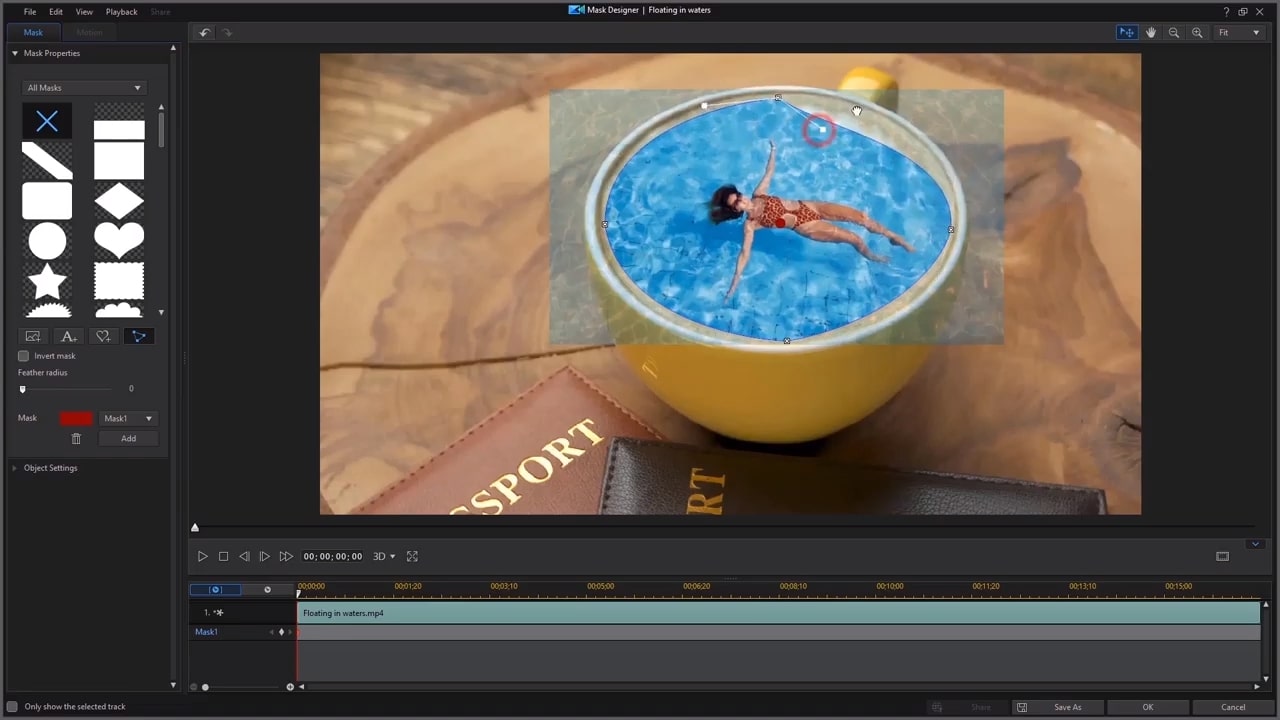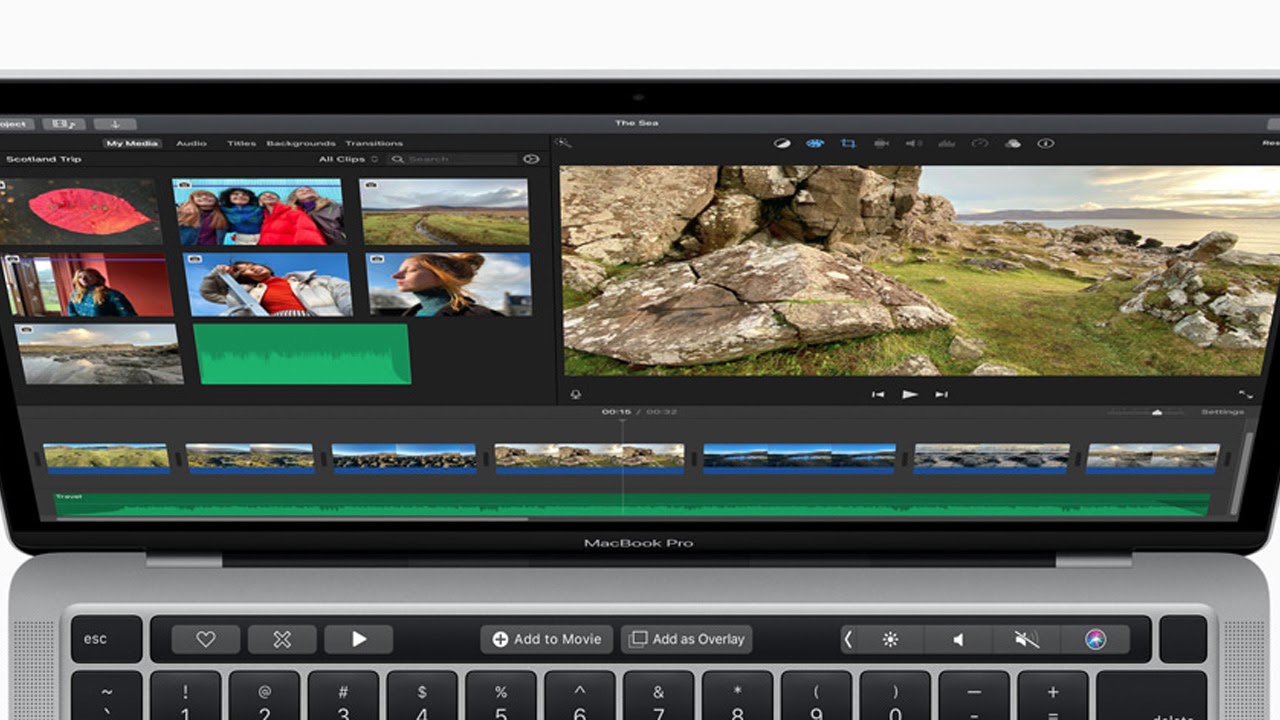CyberLink PowerDirector Mac vs iMovie
CyberLink’s video editing app is finally available for Mac – see how it compares to Apple’s own app in this CyberLink PowerDirector Mac vs iMovie comparison.

Since its launch in 2005, CyberLink PowerDirector has been one of the best pieces of software for video editing. It was previously a Windows-only program, but as of December 2020, it’s also available for Mac.
The Mac version is more than just a port of the Windows version, as it’s been carefully designed to work smoothly on Apple hardware. This puts it into competition with the range of existing software aimed at Mac users, including iMovie, which is an even longer running app. iMovie was first launched in 1999 and has been updated regularly since. Since iMovie is developed by Apple, it’s also well suited to working on Mac computers.
In this feature, we compare CyberLink PowerDirector Mac vs iMovie, looking at the features, performance, support, and pricing of both options. For more options, see our guide to the best video editing software.
CyberLink PowerDirector Mac: $4.33 per month
Save 25%: At the moment, one of our top rated video editing software, CyberLink Power Director has a massive 25% off! This is applicable for both the Windows and Mac versions.
OFFER ENDS JUNE 20TH
CyberLink PowerDirector Mac vs iMovie: Features

PowerDirector’s interface is split into four main tabs: Capture, Edit, Produce, and Create Disk. Edit is where you’ll spend most of your time. This tab has a preview monitor, media library, and effect controls panels at the top and a multitrack timeline along the bottom. The interface can look complex to new users, but it’s not too difficult to learn how to import footage into the media library and assemble clips on your timeline.
iMovie’s interface looks more traditional than PowerDirector’s. Everything is collected within one workspace. This may make you think that it’s a significantly more basic program, but iMovie’s strength is the slick, no-fuss editing. It’s easy to select parts of a clip to use: you can scroll along a clip in your media library and set in/out points with a few key presses. With PowerDirector, you have to open the clip in a separate viewer to do this. iMovie’s “magnetic timeline” makes it easy to insert shots into a sequence without other clips losing relative position. However, you are limited to two video tracks, whereas PowerDirector lets you have up to 100.
Above your preview monitor in iMovie, you’ll find a set of tools to adjust the current clip, including colour sliders, colour matching with a different clip, time remapping, and stabilisation. They’re all efficient and beginner-friendly tools, though options for precise fine-tuning are lacking.
PowerDirector’s tools tend to be more impressive than iMovie’s. For example, it has a particularly good title designer, which gives you in-depth control over text elements. Though not up to the standards of some other competitors, it has multiple colour adjustment sliders, which give you greater control than iMovie over the colour of your clips.
Get the Creative Bloq Newsletter
Daily design news, reviews, how-tos and more, as picked by the editors.
PowerDirector’s advanced tools also include multi-camera editing, 360° editing, and a custom particle effects designer, all of which iMovie lacks. Plus, effects can be keyframed – this means you can set different effects values for particular frames in the clip. PowerDirector will then automatically scale the effects between these keyframes.
Using the mask designer, you can apply a mask to any effect, which means you can select an area of the clip or a moving object within the clip to apply the effect to. iMovie doesn’t have this kind of masking tool, though it does have a chroma-key feature for removing greenscreens, which can be refined using basic masking.
For beginner editors, PowerDirector also has Auto Mode, which guides you through the process of importing clips, assembling them into a basic video, adjusting various elements, and adding music. It’s a useful way to get started, and iMovie has no equivalent.
One valuable feature unique to iMovie, though, is that it’s compatible with the iPhone and iPad versions of the same software. So, you can start working on a project while on the go, and then continue it later on your Mac computer.
CyberLink PowerDirector Mac vs iMovie: Performance

Video editing can be an intensive task for Macs, especially if you will be adding multiple effects or working with 4K footage, so you need to make sure your software can run smoothly.
In terms of system requirements, for PowerDirector, you’ll need macOS 10.14 or later, 4GB of RAM (6GB recommended), 7GB of hard disk space, and at least 128MB of GPU VRAM. For iMovie, you’ll need macOS 10.15.6 or later, 2GB of RAM (4GB recommended), and 3GB of hard disk space.
If your Mac meets the requirements, you should have no problem running either program smoothly. PowerDirector tends to compare well to other, similar programs in speed tests. Regarding iMovie, no one knows how to make applications work on Apple hardware better than Apple itself. Both programs can work efficiently even with 4K footage.
If you do experience lag when working with high-resolution video, PowerDirector gives you the option to use shadow files (which are called proxy files in some other software). These are lower-resolution versions of your clips that are used during the editing process, then replaced with the full clips when you export your finished edit. iMovie doesn’t have an option to use proxies.
CyberLink PowerDirector Mac vs iMovie: Support
CyberLink has an extensive FAQ section on its website, giving guidance on issues that you may encounter with PowerDirector. However, a significant proportion of the articles are outdated, referring to older versions of the software. Apple’s equivalent for iMovie is less comprehensive but up to date.
If you wish to contact tech support, CyberLink can be contacted via email ticket or phone, while Apple can be contacted via phone. Both also have active community forums, where you can ask other users for help with your problems or see if similar issues have been discussed before.
CyberLink PowerDirector Mac vs iMovie: Pricing and plans
There is a free version of PowerDirector, called PowerDirector Essentials, though this not only lacks many of the features, but it also places a watermark on your finished videos. For the full version of the software, you’ll have to pay a subscription fee, which costs $69.99 a year or $19.99 a month. This includes all updates and access to a stock library.
It’s worth noting that CyberLink regularly holds sales, offering around 25% off. Unlike with the Windows version, though, there’s no option to pay a one-off fee to own PowerDirector outright.
Conversely, iMovie is completely free to download and use forever, with no catch. So, when it comes to pricing, iMovie is the clear winner.
CyberLink PowerDirector Mac vs iMovie: The verdict
If you’re looking for a powerful, feature-packed editing program, PowerDirector is a better choice than iMovie. It has a much broader range of capabilities, including multi-camera editing, a mask designer, and the ability to edit with proxy files. Its tools offer a good level of precise fine-tuning, whereas iMovie is much more basic.
That said, if you’re a newcomer to video editing looking to start simple, then you won’t go wrong with iMovie. It’s a slicker, more efficiently designed app, so it is easier to learn. The synchronisation with iPhone and iPad versions is also useful, if you’re likely to be editing on the go. Plus, it’s free, so you’ve got nothing to lose.
Read more:

Thank you for reading 5 articles this month* Join now for unlimited access
Enjoy your first month for just £1 / $1 / €1
*Read 5 free articles per month without a subscription

Join now for unlimited access
Try first month for just £1 / $1 / €1

Kieron Moore is a freelance writer based in Manchester, England. He contributes to Future sites including TechRadar and Creative Bloq, focusing on subjects including creative software, video editing, and streaming services. This work draws on his experience as an independent filmmaker and an independent TV watcher. He can be found on Twitter at @KieronMoore, usually when he’s meant to be writing.

